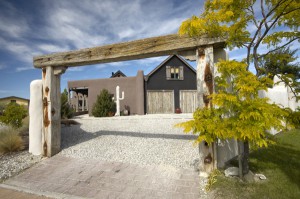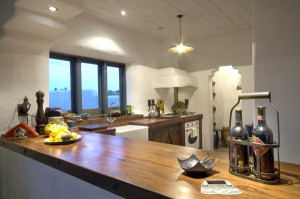Q. Where do we start?
A. With Strawmark. We can implement and manage your entire project from concept to reality, working to your level of investment.
Q. How does the Strawmark construction method compare to traditional methods?
A. They are incomparable. Our bale homes offer so much more for a very cost-effective price. It would be cost prohibitive to try and achieve the same properties using standard timber frame construction – the thickness of the walls, the massive insulation for warmth and cooling, the sound insulation, the fire resistance and the general aesthetics.
Q. Is Strawmark suitable for wetter areas of New Zealand?
A. Strawmark commissioned a Moisture Performance Test by BRANZ/BIA, which sets the building code. Their test results state that our method is suitable for all areas of New Zealand.
Q. Are the homes built on a concrete pad?
A. Concrete floor and foundation is standard. The foundation is the width of the bale wall modified to suit our Strawmark system.
Q. Can you hang things on the walls?
A. The 25mm-thick reinforced plaster is fine to hang things on. Picture hooks can be tapped in, or pre-drilled holes with rawlplugs or toggles designed for plaster hold up to 5kgs. Timber fixing can be installed prior to plastering for anything that is particularly heavy.
Q. What about fire?
A. Compressed Bale buildings are exceptionally solid and fire resistant. Because the bale walls are compressed and plaster sealed they do not hold enough air to permit combustion. Overseas tests have proven the straw bale wall system has a far greater fire resistance than the 30 minutes provided by timber frame walls.
Q. Are the homes naturally warm?
A. Yes, even when unlived in for periods of time they are never deathly cold. Our Strawmark wall system, although super insulated @ R9+ will, at different periods of the year, require some form of heating. Heating is very quickly achieved as the walls do not absorb the heat but hold it within the living spaces where it is then retained over a 24 hour period, or until windows and doors are opened, reducing energy requirements and costs. Similarly it will remain naturally cool in the heat of summer.
Q. Can you have underfloor heating?
A. Yes. Heating requirements will be influenced by design and style. Underfloor heating within the slab, radiators or under tile, open fire or built in log fire, built to New Zealand building standard regulations.
Q. Do you put straw around the fire?
A. Straw is not placed directly around the fire place. Fires are installed according to the New Zealand Building Code and manufacturer’s specification.
Q. Can you build over two storeys?
A. Yes multi-storied homes can be built.
Q. Can the homes take the weight of a standard roof?
A. Yes you can have anything from corrrugate to a heavy roof such as Italian tiles or any other material.
Q. Do you put straw in the roof?
A. Straw is not used to insulate the roof cavity as it is not a sealed environment – fibre insulation is used. Predominantly wool.
Q. Can you have timber floors?
A. Standard floors are insulated concrete and can be polished, tiled or carpeted. Timber floors can be either rebated and fixed to battens on the concrete or glued down to the concrete.
Q. What about bathrooms?
A. Strawmark walls can be used within bathrooms. They are protected with a triple moisture barrier system and tanking to wet areas.
Q. What kind of straw is used, and where can we get it?
A. The types of straw available in New Zealand and tested by us for use in construction are oats, wheat and barley. They are all derived from food crops harvested annually around January through March. The straw is baled clean and shiny directly after harvesting and placed in dry storage. It should not be allowed to get wet at any stage of construction. Strawmark straw is sourced from two supply companies, one in each Island and is warehouse stored for quality.
Q. What about building consents and council?
A. Each council has its own method of determining what is an acceptable solution to the Building Code for structures such as straw bale through the guidance of the code. It must be shown in the design process that we meet these solutions.
Q. Do you have a cavity system?
A. Yes. Strawmark has developed a vented cavity system that not only meets Council Requirements but also retains the look and character of the straw bale wall.
Q. How thick is the wall?
A. The completed wall is @ 500mm thick. Can be soft and rounded, or more contemporary and straight while remaining soft to look at.
Q. What are Truth Windows?
A. A truth window is where the straw can be seen within the wall. These can be anything from a wagon wheel, wine box, shuttered window, forged steel shamrock, or anything you like. All have a glass seal, large or small, with or without a light fitting.
Q. Can any builder build a Strawmark house?
A. A good tradesperson can confidently build a quality straw bale home using our Strawmark specified method of construction. Straw Bale is not a DIY method of construction and does require fully qualified tradespeople
Q. What are the ceilings made of?
A. Ceilings can be solid timbers, plaster finished, gib or ply.
Q. Can you build with combinations of other materials?
A. Strawmark can be used in combination with other building materials such as natural stone or schist rock, corrugated iron, linear board and cedar, hardwood timbers.
Q. Does the joinery have to be timber?
A. Joinery is a personal choice. Both timber and aluminium joinery can be used.
Q. Do straw bale homes appreciate in value?
A. To date, homes we have built have been sold at upwards of 145% over and above building costs.
Q. How is your electrical wiring fitted?
A. Electrical wiring is run as standard – placed in conduits and run down through the walls to the outlets. This is a protection from lime in the plaster which can damage wiring over time and also allows for easy rewiring in the future. Electrical wiring running through our compressed bale walls in conduit has tested free of electromagnetic field radiation.
Q. What about plumbing?
A. Water pipes are brought up through the concrete slab to their respective positions under basins, sinks, bath etc.
Q. What sort of plaster?
A. Walls are stucco plastered using a method specifically modified for our Strawmark wall system. The bales are fitted within the walls and placed under tension. They are then netted and shaped. A moisture-proof fibre reinforced render is then sprayed on the walls both internally and externally with fibreglass mesh troweled in for extra strength. Machine applied to a minimum thickness of 25mm.
Q. Do all the walls have to be straw bale?
A. No, timber frame walls can and usually are used internally. In many internal areas the 500mm thick insulated wall is not required for privacy or thermal insulation. Internal frames wall are lined and plaster finished to ensure continuity within the home.
Q. Can I have deep sills, recesses and niches?
A. The 500mm thick wall of straw bale offers the ability to recess niches and deep window sills. These can be plaster, tile or timber finished.
Q. What about mice?
A. Although rarely seen during construction it cannot be assumed there are none around the property or in the straw. And why not? It makes the ideal condo for them! For this reason mouse poison is laid as a precautionary measure. On completion, the walls are fully sealed so mice cannot get in or out, and there is no food or water within the walls.
Q. What sort of paint is used?
A. Strawmark is a breathable wall system and as such, must be painted with quality breathable paint systems. The Strawmark cavity system allows for elastomeric paint systems to the exterior.
Q. Do Strawmark homes last?
A. All houses in New Zealand must be structurally durable for a minimum of 50 years in accordance with the New Zealand Building Code. Straw Bale is historically proven all over the world, like a well-built piece of furniture that becomes an antique – a well-built straw bale home is timeless, ageless, healthy and wonderful to live in.
Q. Are you limited to design?
A. Good design is essential to the location, style is only limited to your imagination and yes you can have large glassed areas.
Q. Do you have plans?
A. Our plans are specifically designed to suit the needs of individual clients and their locations.
Q. How do you hang curtains?
A. Window and door joinery is fixed to timber frame liners. These also provide the fixing for curtain rods and blinds.
Q. What if they get wet?
A. Like all structures if they get wet they need repaired. If by some unforeseen circumstance a bale wall was damaged and allowed moisture to enter, the wet straw would simply be removed and replaced. This can be achieved by cutting away the render from the damaged area as you would any other cladding, either from the interior or exterior, replacing with dry bales and rendering.
Q. How does the roof fit on?
A. The roof is fixed to the top plate timbers above the bale walls which are not load bearing, just as you would a traditional frame home.
Q. Does it have to be rounded?
A. No. The finished bale walls can be rendered quite smooth and square but will always reflect a little of the soft subtle undulation of the bales which gives the walls their character, feel and insulation properties. This is all part of their timeless beauty. They are never as rigid and harsh as concrete block or tilt slab.
Q. How much does it cost to build?
A. Building costs vary with the requirements and choices of the individual. This can also vary with locations, rural to urban, the variables are endless. We offer fixed price contracts on completion of design, working to your budget and your brief.
Q. How long to build?
A. This depends on the complexity of the build, the site access and weather conditions. For a home of 300m2, approximately 6 months.





